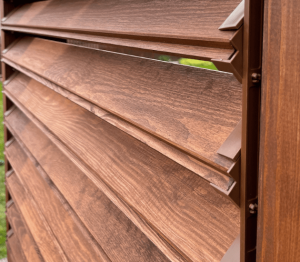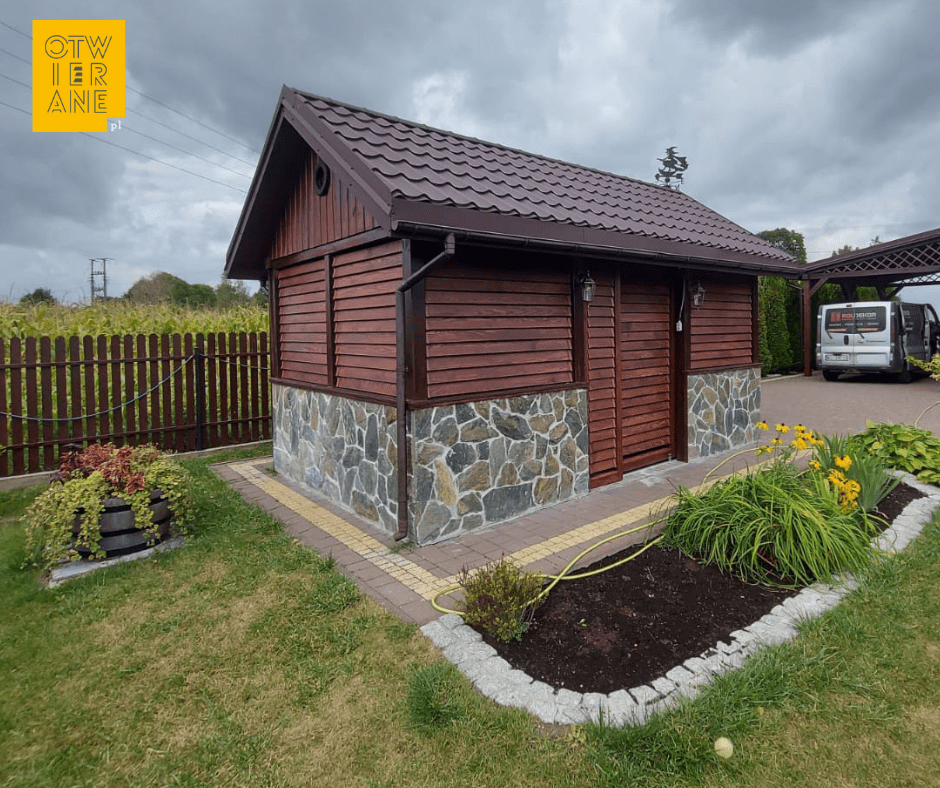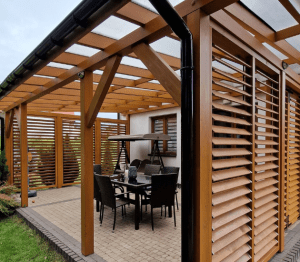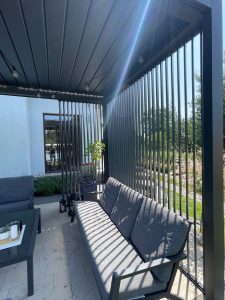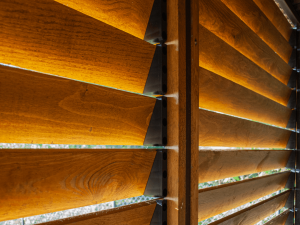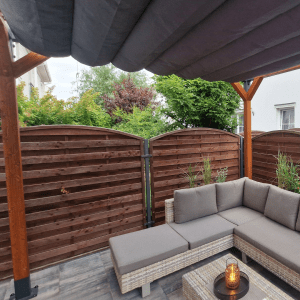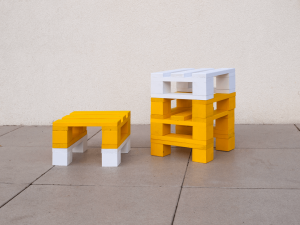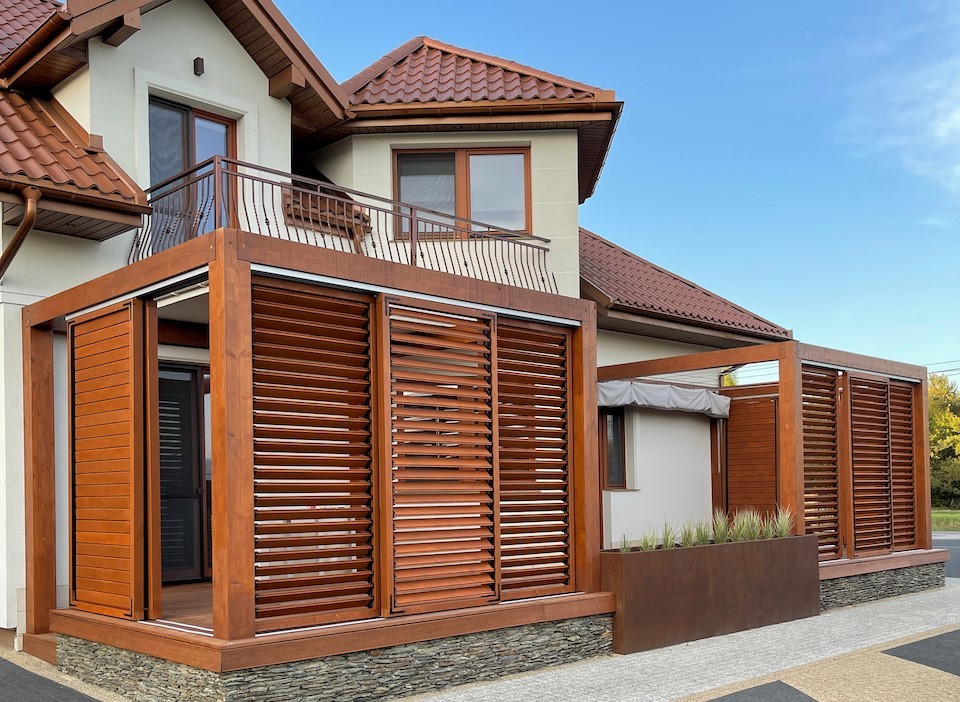
Wondering if it's worth investing in a sliding patio enclosure? See if sliding doors and walls are a good idea.
You are considering terrace building. You have some important decisions ahead of you - choice of material, type of developmentas well as its possible mechanisation. Terrace cladding can be fixed i mobile. A fixed, classic enclosure is certainly simpler to make and cheaper. Movable, on the other hand, gives you many options for using the space.

Permanent construction is made of glass or polycarbonate on a metal or wooden structure. It can be full or partial. A full enclosure makes it possible to spend a lot of time on the terrace also in the off-season. The space is most often used as a winter garden.
You gain a place from which to admire the world around you without freezing in winter. Worse in summer. Terrace cladding made of glass or polycarbonate heats up in the warm months. To avoid this, you need to cover the terrace additionally with curtains or blinds. By doing so, you give up the view.
Sliding enclosure allows you to open up the side spaces of the terrace when you wish. It can be made of glass, plexiglass, wood, composite or aluminium. You adjust the degree of opening according to changing weather conditions and your needs. When is it worth betting on such a solution?
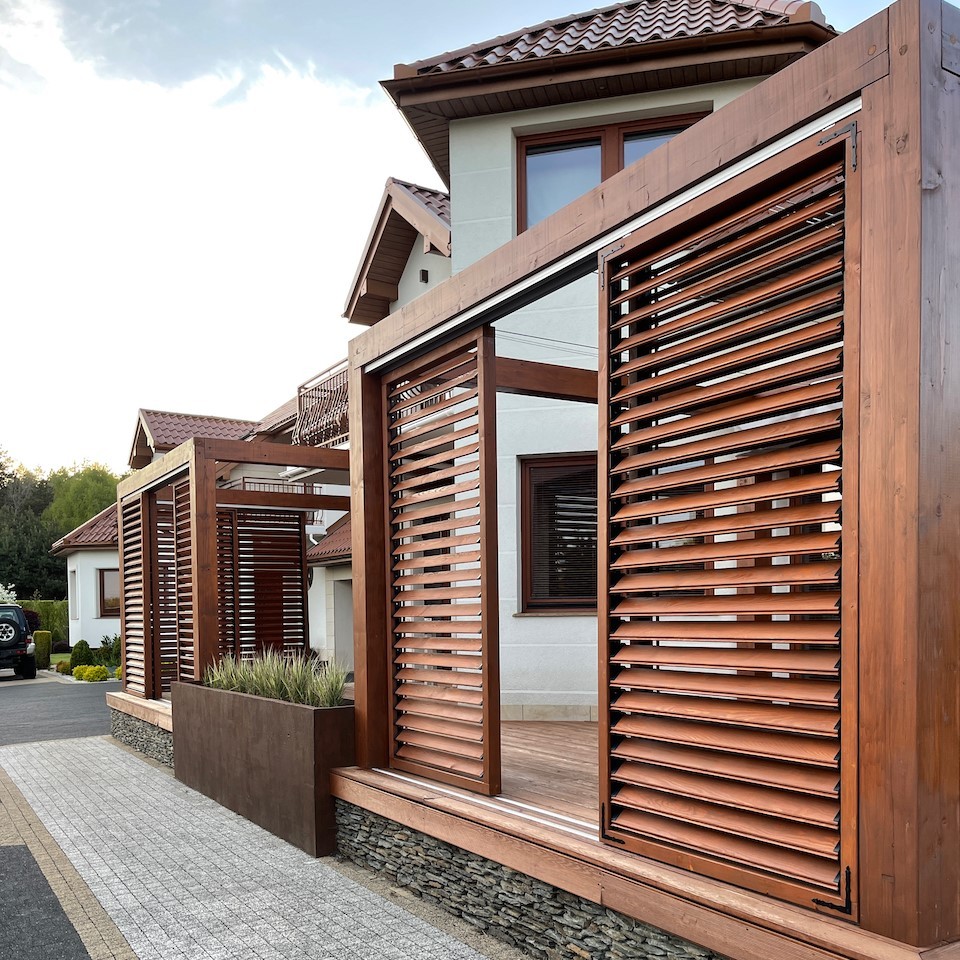
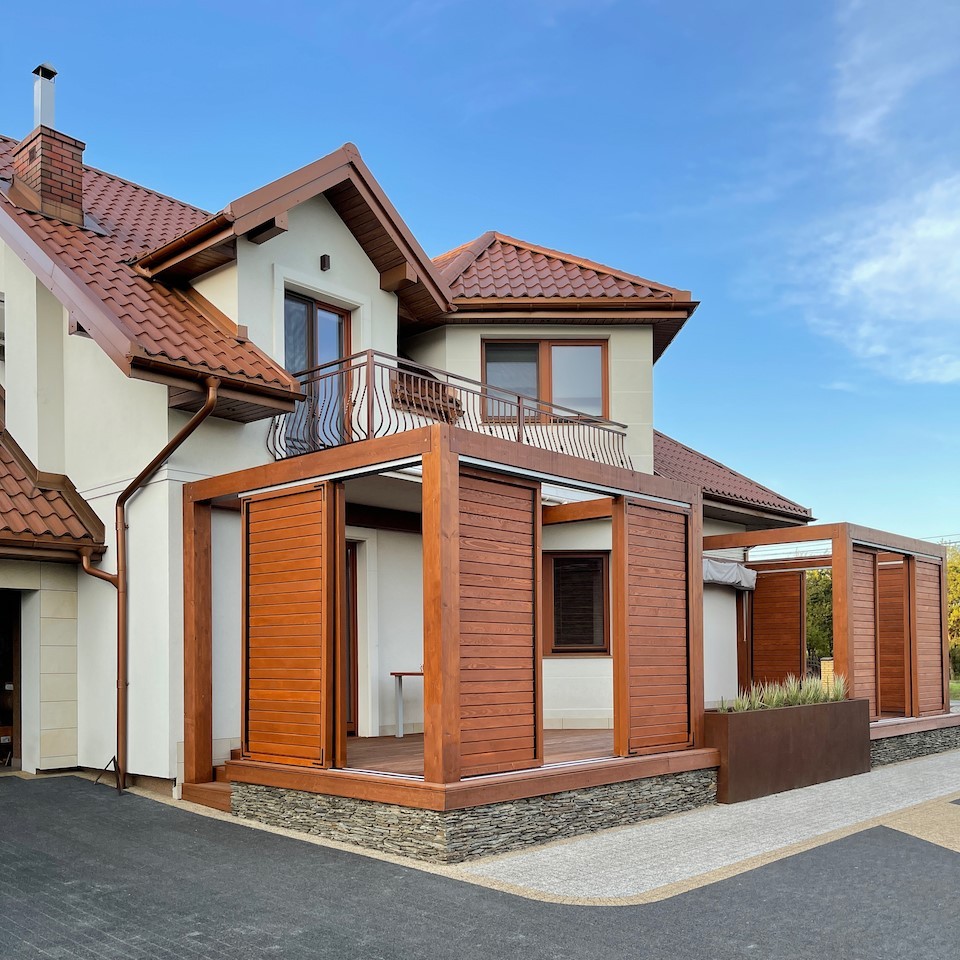
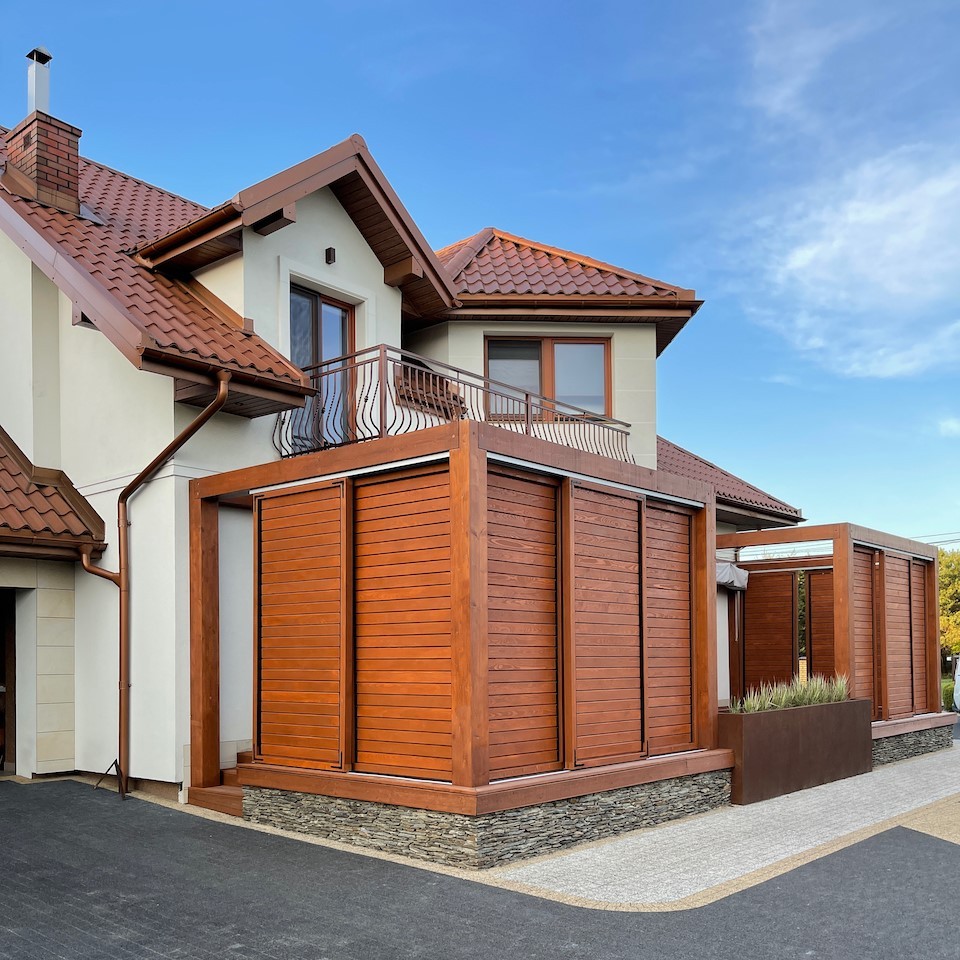
Benefits of a sliding terrace enclosure
Sliding terrace enclosure allows:
- Optimum use of space: you decide for yourself how much space you need. On warm days, the sheltered terrace enlarges the dining or living room. Depending on the weather, you can spread the walls as far as possible or hide behind them.
In winter, you can store garden equipment behind the curtained walls or set up a winter garden. - Combining indoor and outdoor space: the impression of more space and the introduction of more natural light into the interior. Particularly in the case of a glass enclosure.
- Aesthetics and design: the sliding wall is an elegant and modern solution.
- Access to fresh air: makes it easy to enjoy the beautiful weather on your terrace.
- Easy to keep clean: you have easier access to every part of the development.
- Sunlight control: you have influence over the inflow of sunlight regardless of the location of your terrace.
- Weather protection: you can easily shield the terrace from wind or driving rain.
- Energy and heat savings: the sliding terrace enclosure is energy-efficient through better thermal insulation.
- Increasing the value of the property: moveable housing is a modern, exclusive solution that enhances the appeal of the property.
- Flexibility of use: you can easily adapt the space to your needs at any time.
Where a movable terrace enclosure works best
Movable terrace cladding will prove particularly useful in areas exposed to wind.
Do you have a south-facing terrace with a strong sun exposure? Terrace cladding provides the shade you need. Except for glass or polycarbonate cladding, which will not work in this case.
A movable enclosure will also help in situations where the development is cramped and the terrace and garden are small. They will then provide the opportunity to open up and optically enlarge the space.
The enclosed terrace in the off-season can be used to confidently store garden furniture, equipment, bicycles, etc.
Who should consider building a terrace with movable walls?
- Owners of flats with a special view - so that it can be enjoyed every season
- Homeowners with a roof garden - even in the absence of weather, they will be able to enjoy the extra space
- For lovers of garden parties - rain, heat, gale will not spoil the fun for event participants
Movable terrace and gazebo enclosures are ideal for business premises. It will enable them to be used all year round. This will certainly be appreciated by customers. Here are some of them:
- Restaurant and café gardens
- Viewing and restaurant terraces in hotel facilities
- Scenic spots and tourist attractions
- Event spaces
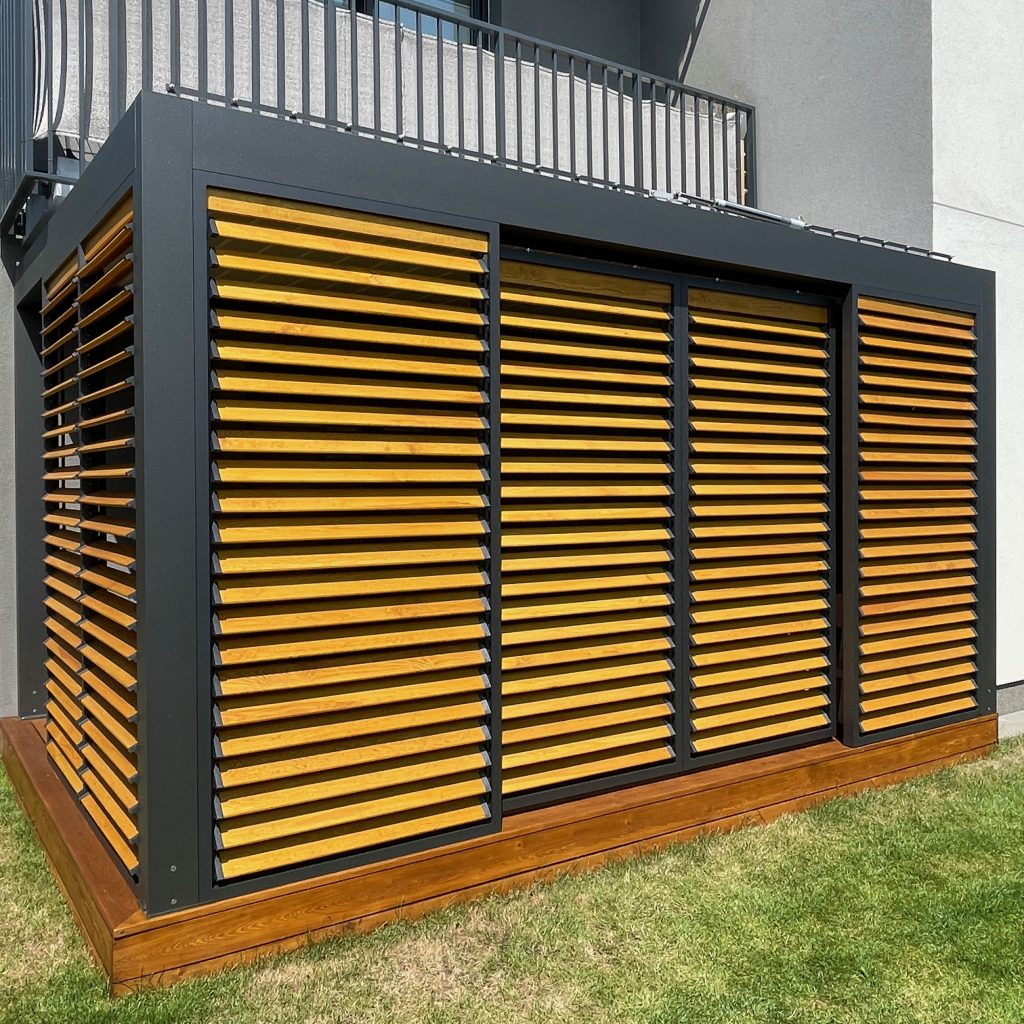
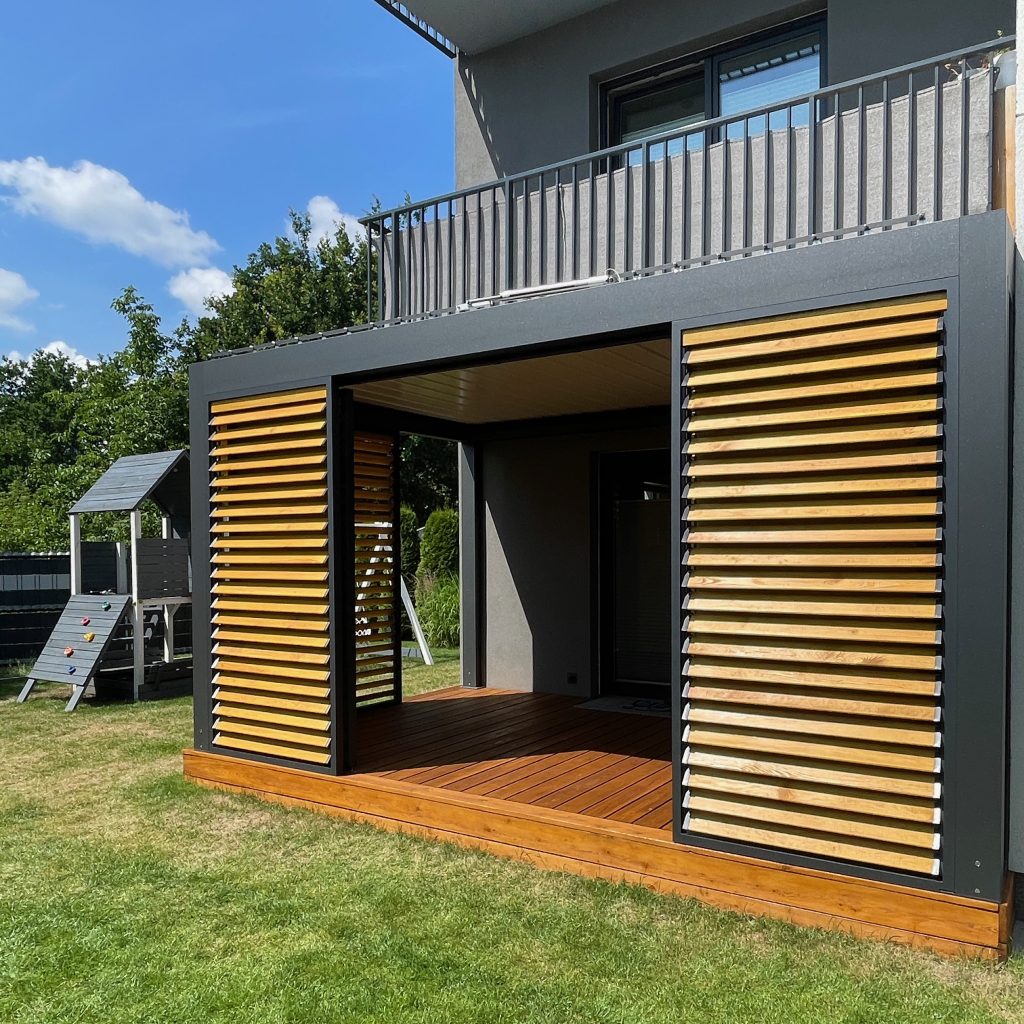
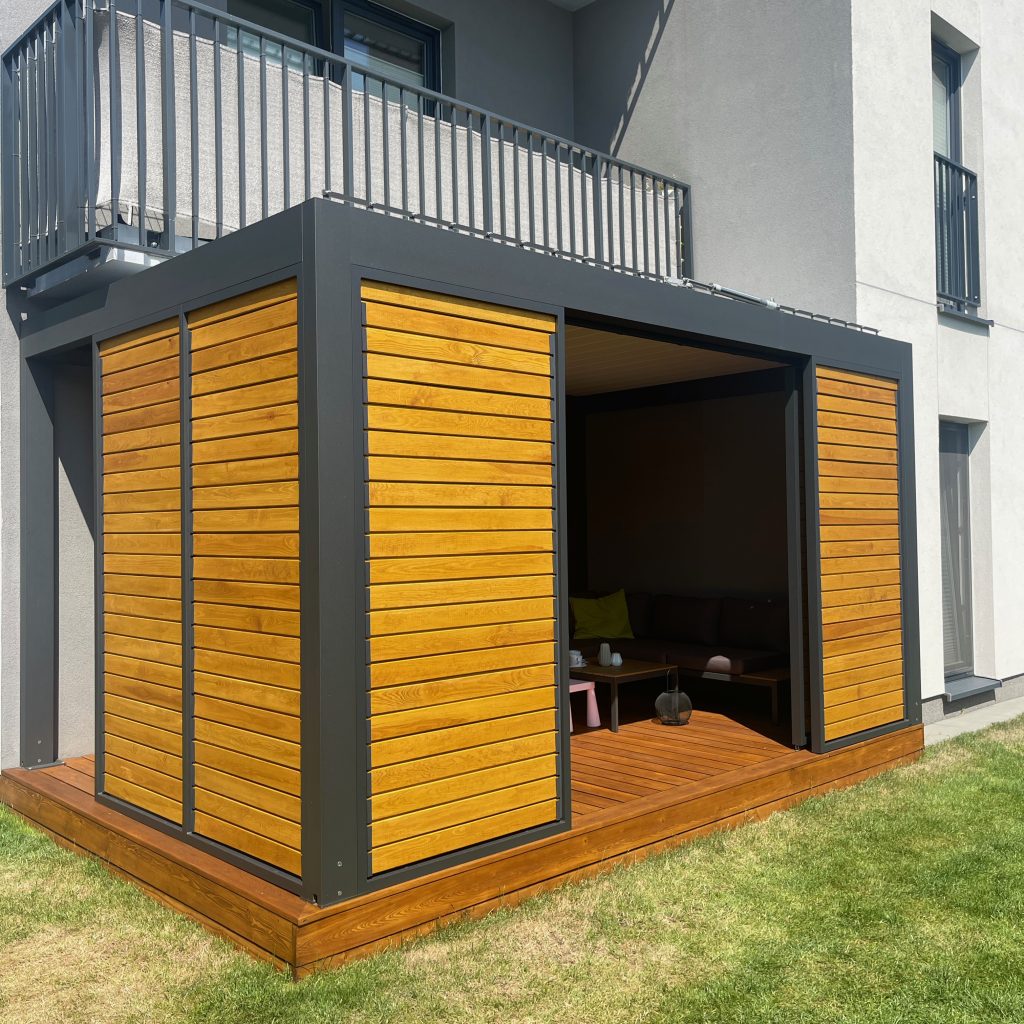
Terrace materials
Your terrace can be built up using a variety of materials. Among these, the following are extremely popular wood and aluminium. And for good reason. Both solutions are durable, look great and offer a wide range of functional and aesthetic possibilities. Combinations of these materials are also possible.
- Terrace cladding aluminium louvres is highly resistant to weather conditions. It requires no maintenance and cleaning is effortless. Available in a range of colours, it will fit in with modern architecture and introduce a designer, minimalist style. Important advantages of aluminium cladding are its relatively low price and long durability.
- Terrace cladding wooden blinds is also a great choice. Wood has a timeless style, is healthy and eco-friendly. Requires maintenanceBut it is not a complicated operation. Sliding wooden cladding will certainly work well in both traditional and modern architecture. It is a more expensive option than aluminium cladding, but durable and of undeniable beauty.
- If you dream of wood but don't have the time to care for it, we recommend that you wood blinds. They are almost visually indistinguishable from wooden buildings and are made of durable aluminium.
You can do any of the above types of construction yourself or with the help of a professional team.
Other types of development
Of course, you can also opt for glass enclosure. It will work well when you need to illuminate a built-in terrace. Or perhaps you have a unique view and don't want to obscure it? The disadvantage of a glass enclosure is that it doesn't protect you from the sun or provide intimacy. And of course, regular cleaning is necessary to maintain its beauty. Fingerprints remain on the transparent sheet. They are easily soiled by pets.
When deciding on a glass enclosure, you need to decide whether the glass panels are to be embedded underwhether in frameless system. Remember, too, that the safety of a glass building depends on:
- type of glass: toughened glass is safe,
- thickness of glass (it should be at least 8 mm thick),
- embeddings: the system should be massive, robust and take into account the high weight of the material,
- installation: glass building should never be done alone.
Do you want transparency in your enclosure, but a glass enclosure is beyond your budget? You can enclose your terrace with polycarbonate or plexiglass. Bear in mind, however, that these are less durable, although lighter materials. They are not as scratch-resistant as glass. They also do not have comparable transparency.
How much does a sliding terrace enclosure cost?
The cost of building a terrace depends primarily on its surface area and the extent to which you want to build it. The roofing of the terrace and its type is also an important factor. Once you've decided on the look and feel of the enclosure, it's worth having a look around at the market offers. To get an accurate cost for a particular type of terrace development, contact several specialist companies. Get quotes and then compare the costs carefully, along with all the factors below. Also, bear in mind that the final price of the development may vary depending on location and market conditions.
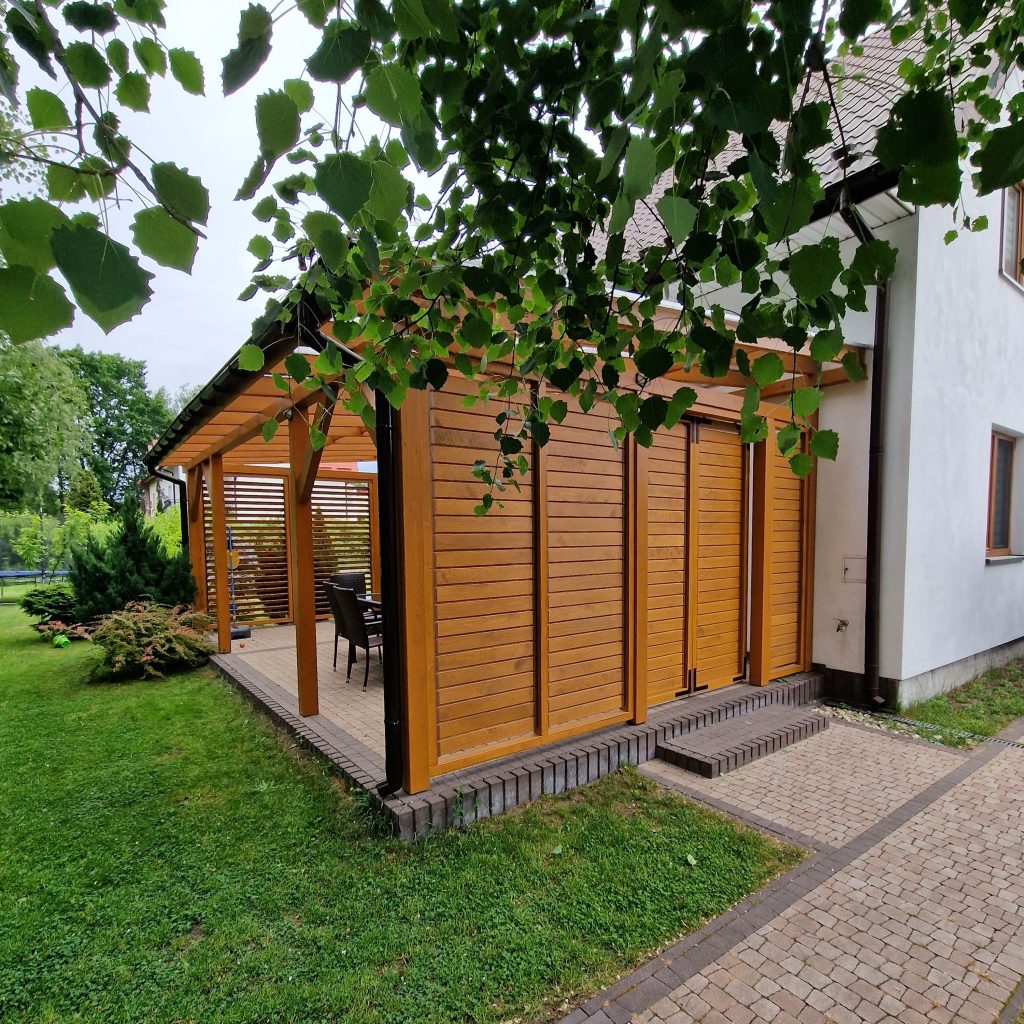
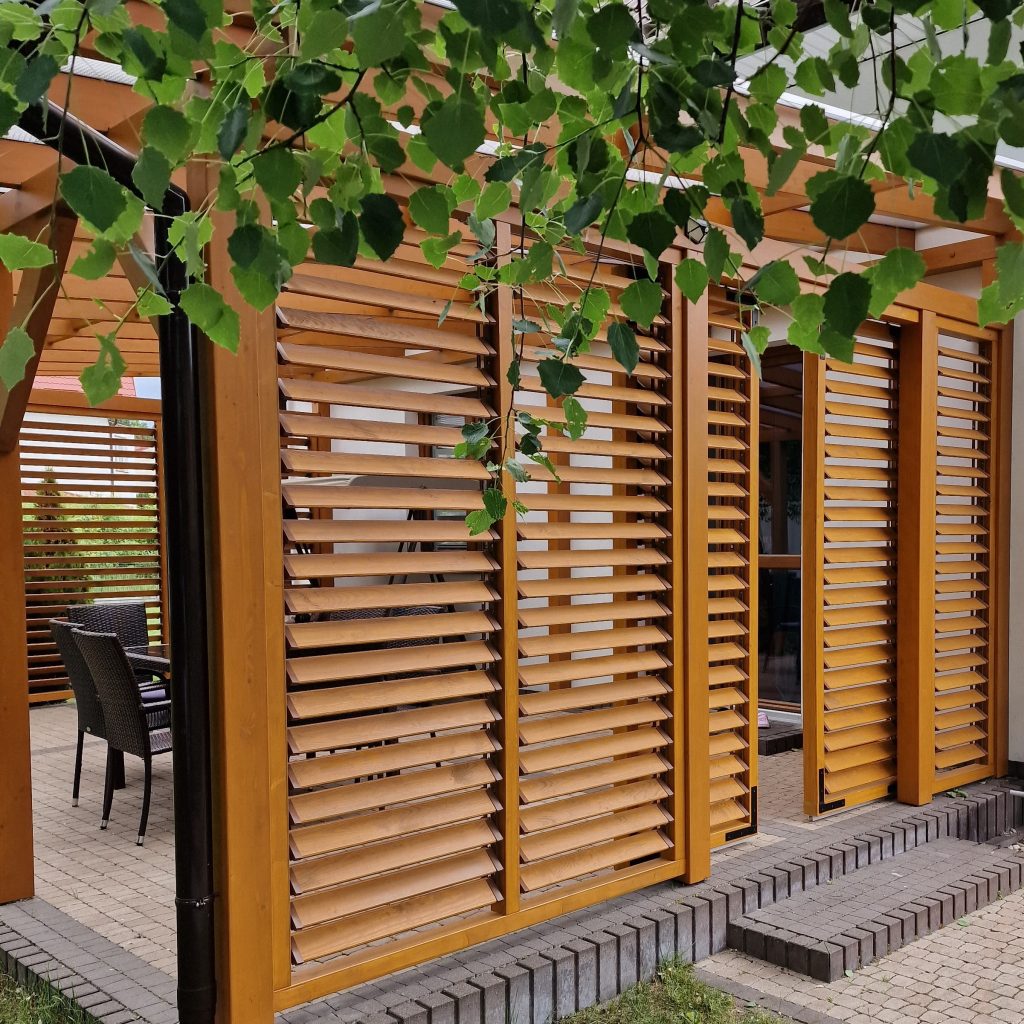
When deciding whether to enclose your terrace with movable elements, consider the following costs:
- type of material to be incorporated (aluminium, wood, glass, plexiglass, polycarbonate),
- the cost of the building elements: frames and framework,
- the cost of mounting components,
- the cost of any building automation systems,
- cost of material for roofing: total - i.e. terrace pergola or partial,
- the cost of mounting components for the canopy,
- the cost of finishing - paints, maintenance products,
- transport
- hiring an installation team.
Need an accurate and reliable quote for your planned development? Then get in touch with us. We are at your service.

